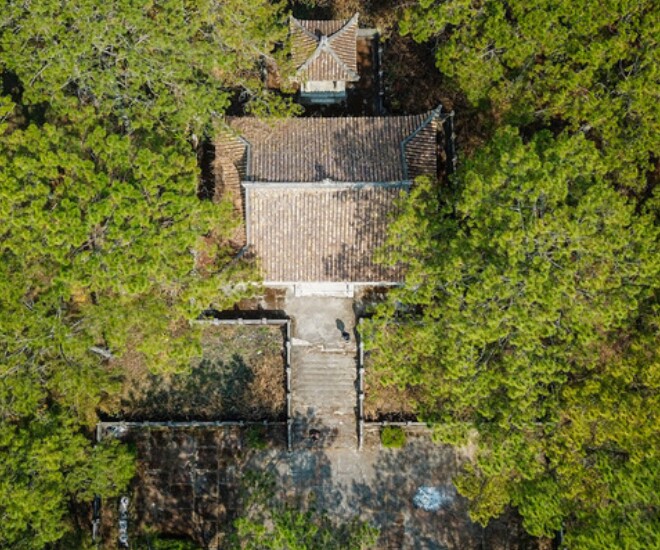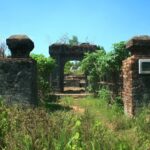The late Nguyen Huu Hao, a prominent and wealthy landlord from Tien Giang in the Mekong Delta region, chose the serene and cool highlands of Da Lat as his final resting place. This wish was fulfilled by his only daughter, Nam Phuong, the last empress of the Nguyen Dynasty, with utmost reverence and respect.
During his lifetime, Nguyen Huu Hao had a deep affection for Da Lat, and his family had developed hundreds of hectares of land, establishing vast coffee and tea plantations in Xuan Truong and Tram Hanh, as well as what is now the city center of Da Lat. Many of the city’s most beautiful mansions were purchased by Emperor Bao Dai from French officials, the most famous being Palaces I, II, and III.
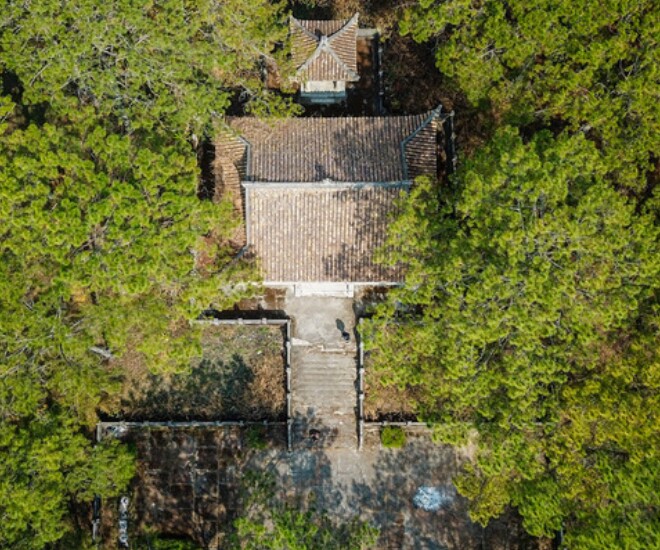
Nestled atop a hill and surrounded by lush pine forests, the tomb is a mystical and enchanting site, with winds whispering through the trees. After her marriage to Emperor Bao Dai in 1934, Nam Phuong became not only a symbol of the intelligence and modernity of Vietnamese women in the early 20th century but also a devoted daughter. She brought her parents from the Mekong Delta to live with her in Da Lat, and after their passing, she fulfilled their final wishes.
In 1937, she began constructing a tomb for her father on a gentle hill where nature and humanity seemed to be in perfect harmony. It took four years to complete, and the tomb was built using solid green stone, symbolizing durability and solemnity. The tomb’s architecture blends traditional Vietnamese styles with Western and Catholic influences, reflecting the religious beliefs of the empress’s family.
The entrance to the tomb, located at the foot of the hill, features four tall pillars adorned with lotus carvings and statues of guard dogs, symbolizing sacred protection. Two pairs of couplets, composed by Nam Phuong herself, express her deep reverence and memorialize her beloved parents.

The path leading to the tomb, known as “Nhat Chinh Dao,” consists of 36 stone steps with intermittent resting platforms, creating a sense of tranquility. At the end of the path stand two stone lions guarding the entrance to the tomb, protecting the soul of the deceased.
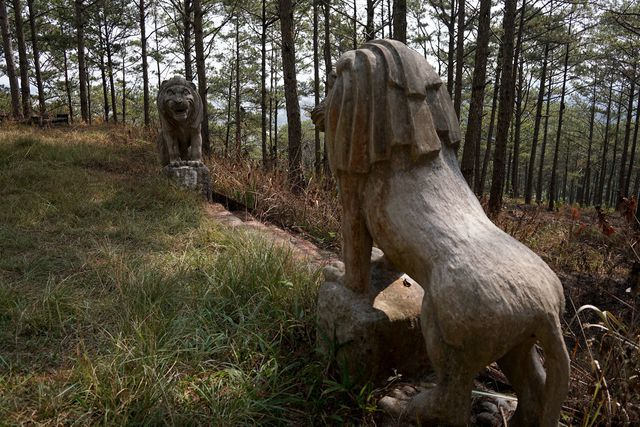
At the final step are two stone lions standing guard before the tomb chamber.
The enchanting and mysterious atmosphere of the tomb attracts those seeking exploration and a unique experience.
The tombs of Nguyen Huu Hao and his wife, Le Thi Binh, are carved from solid green stone and adorned with intricate patterns symbolizing their authority and wealth. The tombs are placed side by side, slightly elevated, within a chamber that blends traditional Hue royal architecture with Western influences. Between the tombs sits a stone table, also crafted from green stone.
At the back of the tomb is a small stone stele inscribed with a eulogy composed by Empress Nam Phuong herself in 1939. This stele is not only a memorial to her beloved father but also a testament to the strong family bonds and emotions of an empress amidst a tumultuous historical backdrop.
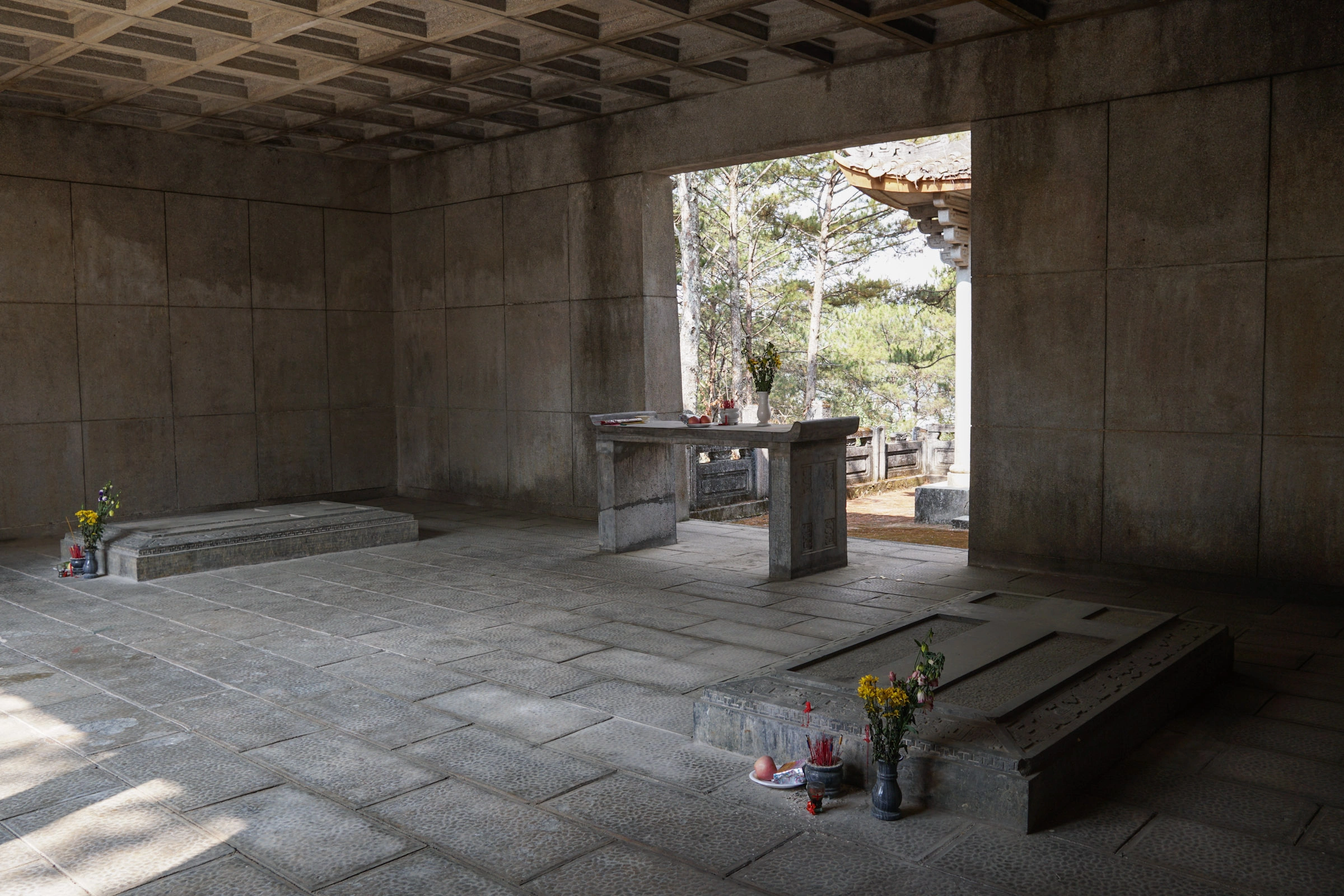
Inside the tomb are the song tombs of Nguyen Huu Hao and his wife, reflecting the concept of “Can Khon hiep duc” (the harmony of yin and yang).
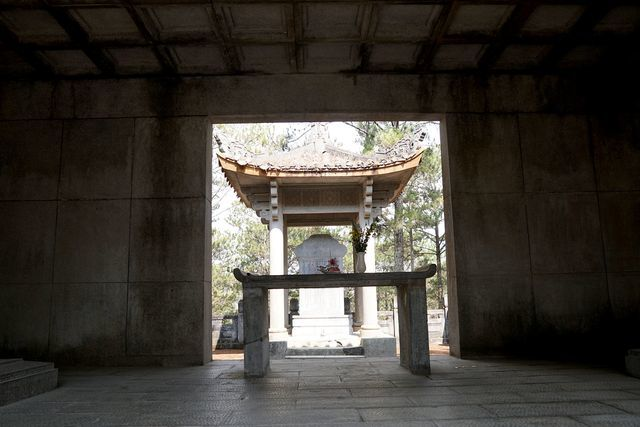
Stone steles at the back of the tomb provide information about Nam Phuong’s family.
Nearly 80 years later, the tomb retains its ancient beauty, with its yellow-glazed roof tiles, a ceiling patterned after a flower arrangement, and a cross at the peak, blending Eastern and Western influences. This site is not only a rare link between the Nguyen Dynasty royalty and the highlands but also an emotional destination for those seeking tranquility and serenity in nature’s embrace.
The tomb of Nam Phuong’s father stands apart, not seeking attention or grandeur, but quietly nestled among the pines, reflecting the empress’s own character and personality. Over the years, the tomb has not been renovated or developed for tourism, adding to its secluded and serene atmosphere. Not many visitors are aware of its existence, and today, signs of deterioration are evident, with some details around the roof, steps, and railings showing damage.
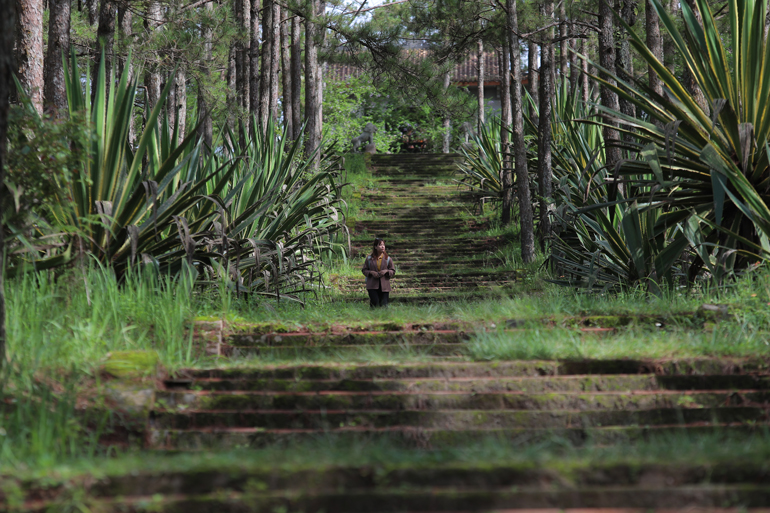
The ancient and rustic charm of the tomb, with its moss-covered surfaces, sparks curiosity and wonder among visitors.
Currently, the tomb is forgotten and rarely visited, with vegetation overtaking its surroundings, giving it a wild and abandoned feel. Some of the steps leading to the tomb have cracked and broken, so it is advisable for visitors to come in groups or with a guide or local resident. It is also recommended to visit the site in the morning when the sunlight filters through the trees, creating a magical atmosphere and providing the best lighting for photography.

























